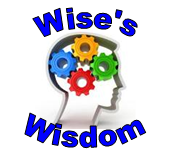
25
Signs You Might be a 21st Century Teacher
Do you think of clouds as good things?
Do
you plan lessons assuming that every student has Wi-Fi broadband access 24
hours a day, 7 days a week?
These
are just two signs that you might be a 21st century teacher. Take a look
at this humorous, but true list that describes the 21st century teacher.
This certainly serves as a great reminder of how much the business has
changed in the last few years!
5 Characteristics of a Change Agent
As I read this article from Geourge Couros, I couldn't help but be reminded of the 7 Characteristics of Highly Effective Leaders and our focus this year on "Innovation." As we have said many times this year, Innovation doesn't end with the ILC, it is only one piece of the puzzle. It is clear we have embraced this philosophy, as we continually see and hear about many new "innovative teaching practices" at all levels. Couros states "(change agents) – People who act as catalysts for change…" I'd say Hilliard City Schools administrators clearly embody this role of a change agent!
5 Characteristics of a Change Agent
3 Investments Good Leaders Make in Creating Other Leaders
It is mid winter--gray skies, short days, and lot of tasks on the
'To Do' list. People, including teachers and administrators, need
encouragement to 'keep striving' for our goals of improved student achievement.
This week's article provides important reminders for busy and
task-oriented principals like yourselves. Blogger Joe Mazza reminds us of
"Three Investments Good Leaders Make in Creating Other
Leaders":
1. Invest daily in a healthy school culture. Support new
teachers and invite others to contribute to the positive atmosphere in the
school building through trust and respect.
2. Invest in personal relationships. Take the time to
ask staff about their family and personal circumstances. Those brief
conversations help folks feel important to us and valued in the
organization. Superintendent Dale McVey provides outstanding modeling of
this behavior by remembering details of previous conversations about the kids,
the home, and movies you've watched.
3. Invest in an "outside the box" lens.
Encourage your staff members to think differently and take risks. Find a
way to say 'yes' to their new ideas.
Leaders benefit greatly from our small investment of time and
concern for those who work along side of us daily. Students and families reap
the real benefits of content school personnel.
It’s that time of year. We leave for work in the dark. We head for home in the dark. The holidays are over, and it’s easier to give in to crankiness. It’s also the perfect time to remind ourselves why we do what we do. “Ten Secrets to Surviving as a Teacher” shares some of the things that are easy to lose sight of in our daily professional lives. Terry Heick also infuses videos to add some levity to the message. There are no major surprises on the list…just good reminders. Heick shares common sense advice like knowing when to stand strong and when to bend in the wind, standing out by finding or creating "your own brand," and never losing sight of your purpose. Ultimately, teaching is "the artful and thoughtful marriage of learner and content." January/February is the perfect time to share reminders with our colleagues, especially if they find themselves lost in the groans and growls that accompany Ohio winters.
'Girl Rising': Educating Girls
I
hope this link isn't blocked like my last one, I apologize for my previous
article on creativity, not having a simple way to view it. Nonetheless, this
week I want to bring you something different. This isn't an article
focused on technology, innovation, or even the future. Maybe the latter
isn't so far off, but I thought I would reach out to you through your heart
strings this week. I watched this trailer the other day and thought about it
several different times over the weekend. The documentary is about 9 girls from
9 countries that are striving to find an education in their suppressive
culture(s). I have one simple reason for sharing it. We need to remember
how much "good" we are doing and can continue to do for our students
that come to us each day. Somewhere deep inside, even the toughest child, is a
desire to earn an education. Perhaps we haven't discovered what that
desire is yet, but it's there looking for an interest or passion to grab on to
and grow. Here at HCSD, look at the many opportunities that you/we are
providing for growth of passion? If that doesn't excite you on this final
monday in Jan. then watch this trailer and go out into the hallway and start
high-fiving some students, you may be the spark of their interest or passion.







